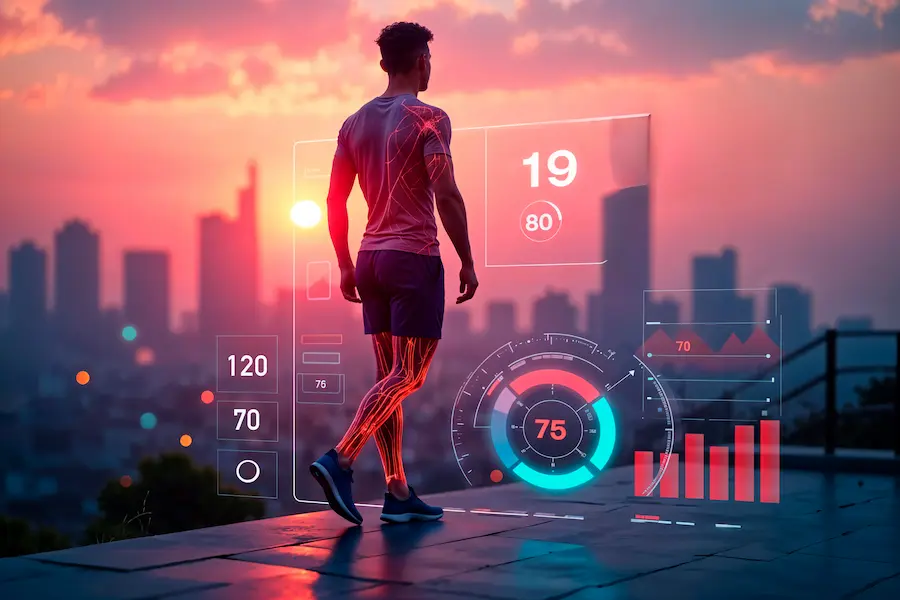Technology is changing almost every aspect of our lives, and sports are no exception. From athletes pushing their limits to fans experiencing the game in innovative ways, sport tech is transforming how we interact with sports whether you’re training, competing, or simply watching.
The exciting part for me is seeing how technology is not just improving performance; it’s also changing the overall sports experience for everyone involved. Whether you’re a fan, athlete, or working toward fitness goals, this is a time to embrace new possibilities and be part of a rapidly evolving sports world.
In this post, we’ll explore how tech is changing the game from wearables to virtual reality, AI, and data analytics. Let’s dive into how these innovations are reshaping sports, making them more engaging, efficient, and accessible.
The Role of Wearable Technology in Sports
Wearable technology has revolutionized how athletes monitor and improve their performance. Fitness trackers, heart rate monitors, smart shoes, and even rings like Oura have brought athletes real-time insights into training, recovery, and health metrics. These devices provide feedback that can be used to adjust workouts, optimize nutrition, and track recovery, enabling both professional athletes and everyday fitness enthusiasts to maximize their potential.
For instance, I’ve personally used a fitness tracker to monitor my runs. Tracking my pace, heart rate, and recovery time pushes me to perform better with each session. These wearables are no longer just for the pros they’re for anyone aiming to take their fitness to the next level.
Wearables are also increasingly popular in professional sports settings. Teams and coaches use devices like WHOOP and Oura Ring to measure sleep quality, monitor recovery, and understand how fatigue impacts an athlete’s performance. This data helps tailor individual training programs, ensuring optimal performance and preventing overtraining.
Virtual Reality: A New Frontier for Training
Virtual Reality (VR) is transforming how athletes train by creating immersive, controlled environments to simulate real-world scenarios. This technology allows athletes to practice specific skills, sharpen reaction times, and enhance their decision-making—all without the pressure of live performance.
I first experienced VR training during a cycling class, where it felt like I was riding through mountain trails. Not only was it fun, but it kept me fully engaged and allowed me to focus on performance, improving my output in a more immersive way. VR isn’t just for professional athletes anymore; anyone looking to enhance their skills can benefit from it.
Professional teams in sports like football, basketball, and soccer are using VR training platforms such as STRIVR and vSports to simulate game-day scenarios. This not only helps athletes improve their performance but also reduces the risk of physical injury by allowing them to practice high-intensity drills without the physical strain.
However, VR, while excellent for mental and skill development, cannot replace the physical demands of actual practice. It’s an invaluable supplement to physical training, especially in contact sports, where actual movements and conditioning are key.
Smart Equipment: Enhancing Performance with Precision
Smart equipment is offering athletes new ways to track their movements with pinpoint accuracy. Tennis rackets, golf clubs, and even soccer balls now come with built-in sensors to measure data such as speed, strength, and precision.
I’ve used a smart tennis racket, and it changed the way I practice. The data from the racket helped me adjust my grip and stroke technique instantly, making every practice session more focused and efficient. It’s like having a coach with you on the court.
Smart equipment is increasingly popular among recreational athletes. Devices like smart golf clubs, soccer balls, and tennis rackets provide real-time feedback, helping anyone from amateurs to seasoned athletes fine-tune their technique. Even if you’re training in your backyard or local gym, this tech provides valuable insights into your performance.
Data Analytics: The Power Behind Strategic Decisions
Data analytics has become a vital tool in sports for making smarter, data-backed decisions. By analyzing performance metrics, in-game statistics, and player data, teams can optimize their strategies, select the best players, and adjust tactics during games.
I watched a soccer game where the coach changed the team’s formation mid-game based on real-time data from performance analytics. It was a fascinating example of how decisions in sports are now driven by data, not just intuition.
Soccer teams, for instance, use data to track player movements and assess game performance, which allows coaches to adapt strategies as matches unfold. While predicting every move of an opponent is still challenging, data analytics helps teams stay ahead by improving their own gameplay.
Artificial Intelligence and Machine Learning: Enhancing Fan Engagement
AI and Machine Learning are reshaping how sports organizations engage with fans. By analyzing fan behavior, sport tech powered by AI customizes fan experiences, such as personalized highlight reels, live chat interactions, or even predictive insights during live games.
Sports teams use sport tech and AI to offer tailored merchandise and optimize ticket sales based on fan preferences. This personalized approach helps ensure fans get what they want when they want it.
On the broadcasting side, sport tech driven by AI is elevating the fan experience by providing real-time player tracking, live stats, and instant replays. AI is also beginning to power new broadcast formats like custom highlights or interactive features, making the game experience even more dynamic.
Augmented Reality: Bringing Sports to Life
While VR offers immersive training, Augmented Reality (AR) is revolutionizing how fans experience live games. AR overlays digital data like stats and player profiles onto the real world, providing fans with an interactive, engaging experience through sport tech.
At stadiums, sport tech in the form of AR is already enhancing fan interaction by offering real-time stats, interactive maps, and exclusive content directly on mobile devices. This tech brings fans closer to the action, enriching the overall game-day experience.
E-Sports: The Rise of Competitive Gaming
E-sports, or competitive gaming, has evolved into a global phenomenon. Players compete in tournaments for large cash prizes, and advanced sport tech such as gaming rigs and wearables help track their health and performance during long sessions.
The rise of platforms like Twitch and YouTube has transformed e-sports into a mainstream form of entertainment. Millions of fans worldwide watch and engage with e-sports competitions, marking gaming as a legitimate sport in its own right, driven by cutting-edge sport tech.
Biomechanics and Sports Tech: Improving Performance and Preventing Injury
Biomechanics, the study of how the body moves, plays a crucial role in sports tech. Motion-capture systems and wearable sensors are helping trainers track athlete movements, optimize performance, and reduce the risk of injury.
For example, biomechanics technology can help runners adjust their stride to reduce joint stress, or assist athletes in contact sports by refining their technique to prevent injury. By biomechanics, the study of how the body moves, plays a crucial role in sport tech. Motion-capture systems and wearable sensors are helping trainers track athlete movements, optimize performance, and reduce the risk of injury.
For example, sport tech in biomechanics can help runners adjust their stride to reduce joint stress or assist athletes in contact sports by refining their technique to prevent injury. By leveraging this sport tech, athletes can improve their performance and reduce the risk of injury, keeping them in the game longer.veraging this tech, athletes can improve their performance and reduce the risk of injury, keeping them in the game longer.
Conclusion: Sport Tech’s Bright Future
The future of sport tech is promising. With ongoing innovations in wearables, AI, VR, and data analytics, athletes and fans alike will continue to benefit from more personalized experiences, enhanced performance, and better safety. As these technologies evolve, we’ll see a more interactive, efficient, and sustainable future for sports worldwide.
Sport tech is revolutionizing every aspect of the sports world—from performance and training to fan engagement and inclusivity. With each breakthrough, the future of athletics is unfolding before our eyes. Whether you’re an athlete looking to improve your game or a fan seeking a more immersive experience, sport tech is reshaping the world of sports in exciting new ways.
Read Also:Revolutionary Tech Connect the Dots: How Digital Tools Are Transforming Life in 2025

